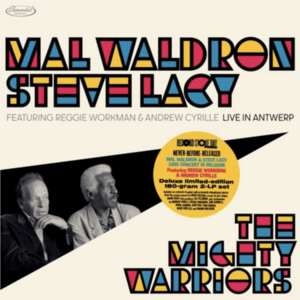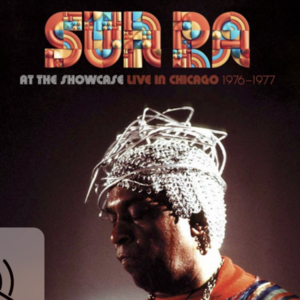The DJs of Urban Dance Squad and Incubus ‘Wax’ on Rock Turntablism and the Culture of Cut
DJ DNA vs. DJ Kilmore
Christopher R. Weingarten
Anyone remotely in tune to the basic mechanisms of pop culture phenomena is slowly witnessing one of the most uncalculated and natural shifts in contemporary music’s sonic landscape. The jarring cuts, cacophonous blurbles, and exquisitely dynamic moodiness of modern turntablism is undercutting and cutting under the traditional rock framework, creating an organic coalescence of distinct expressions that could eventually blur the very lines between genre, sub-genre, and sheer experimental postmodernism.
Platinum and multi-platinum-selling rock acts like Kid Rock, Limp Bizkit, Sugar Ray, and Slipknot have been unrepentant (though not always entirely tactful) about utilizing the piercing slice ‘n dice of turntables to enhance and amplify their breed of audio aggression. Even new metal’s indignant upstarts like Crazy Town and Methods Of Mayhem benefit from a collision with the wheels of steel, a truly logical combination when considering that the very essence of the turntable involves a familiar irksome noise of provocation. Do you remember that sound when you were at a party and someone would forcefully wrench the record from the turntable? Now repeat that, synchronize it, and syncopate it, and you’ve got the foundation for Limp Bizkit’s instigating rap-metal discordance. This will remain the obvious music selection for today’s disillusioned, insurgent youth until someone can set guitars to fingernails scraping funky rhythms on a chalkboard.
But the turntable’s emphatic invasion of rock’s fabric doesn’t begin or end with hard rock and heavy metal’s clamorous scratch tactics. Rock visionaries, critics, darlings, and indispensable revolutionaries like Beck, Moby, and Portishead are rarely seen performing without a trusted ally manning the ones and twos. Pop sensations like Smash Mouth use scratching as a charmingly giddy novelty in chart-topping singles, and alterna-rock anti-heroes like the Eels frequently utilize clever turntable grooves as emotive wallpaper. Underground turntable heroes like former Invisbl Skratch Pikl DJ Disk and Rob Swift toy with live bands, the turntable collage-jazz twaddle of Kid Koala is universally lauded by hardened rock critics, and the spastic breakneck turntable histrionics of DJ Q-Bert is currently used in commercials airing on MTV to hock the Web universe.
Why the new cultural significance of DJing? Originally a black art form spawned in inner-city New York more than 20 years ago by the pioneering artistry of performers like DJ Kool Herc and Grandmaster Flash, today’s neo-turntablism could be the beginning of an urban craft finally “turning the tables”: taking back the originally black art-form of rock ‘n’ roll that was forcibly stolen from it in the 1950s by bastardizing its sound in similar fashion. Rock turntablism – essentially, the manipulation of preexisting sounds – could be a cryptic yet powerful metaphor on coping with the painfully manipulative information overload inherent in cyber-swindles, tabloid television, corporate puppetry, and reality programming that abuse the cultural consensus as well as the body-rockin’ zeitgeist. But, most likely, new turntablism is the result of children of the ’80s growing up on a volatile mixture of hip-hop culture, punk-rock tribalism, heavy-metal posturing, and technology-obsessed new wave, techno, and pop music.
While the rock turntable is still in its embryonic stages as a phenomenon or instrument of cultural upheaval, it has always held a place as a melding tool between two disparate cultures – whether it be “The Adventures of Grandmaster Flash on the Wheels of Steel” taking the side-step out of Queen’s “Another One Bites the Dust,” Herbie Hancock and the agile scratching of D.S.T. forcefully jutting turntablism into the faces of mainstream America with the electro-funk jazz-romp “Rockit,” or Run D.M.C.’s Jam Master Jay transforming Joey Kramer’s drum intro to “Walk This Way” into a furiously sliced session of mincemeat cut-uppery.
“urbanDanceSquadW”
But unquestionably one of the pioneering moves of both the rap-rock genre and rock turntablism itself was the formation of the genre-defying Dutch quintet Urban Dance Squad, featuring able turntablist DJ DNA, whose sublimely tumultuous scratchery, walls of sound, and anarchic noise are the fountainheads for today’s rock n’ roll cut chemists. Upon their formation in 1987, UDS was the first band to implement a DJ into their full time lineup and, in doing so, concocted an artful mix of rap, soul, rock, folk, and funk that resulted in the articulate and adventurous 1990 hit single “Deeper Shade of Soul,” a series of five bold and underrated albums, and a visibly lasting impression on today’s enclaves of style-crossing rap-rockers.
As many cynics dub the turntables a passing novelty likened to the Moog synthesizer, electric sitar, or (God forbid) the theremin, DJ DNA (born Arjen de Vreede) sees the recent trend of turntables as a natural progression from their inception in the ’70s and evolution throughout the ’80s. “They were revolutionary, like the guitar was,” DNA said. DNA is no stranger to revolutionary moves. In introducing the strictly hip-hop-oriented percussiveness of turntables to the architecture of rock, DNA changed the game forever. For this, he felt the sting of hip-hop purists early on. “There was a change and guitars were really not something that was considered hip,” DNA said. “There was a little distance from me and the rest of the hip-hop DJs initially, but it faded away.”
In 1981, when DNA first began scratching, the art was still busy being perfected in the boroughs of New York City. “My sister’s turntable wasn’t good enough for her anymore, and she bought a new one. She gave me the old one, so the first thing I did was doing what I heard on all these tapes,” DNA said. “I started to scratch.
“I’d try a lot of things out because there was no influence from other DJs. In the States, you can go to parties and places where DJs scratch, but there was no such thing here. People thought I was crazy doing that. I remember there was a Dutch TV station that made a documentary in New York that recorded Flash and we would be rewinding that tape – two minutes – but rewinding it hundreds of times and tracing every move. Then the first time we saw a crossfader we were like, ‘he’s doing it from left to right instead of up and down?’.”
While years of practice and a love of hip-hop gave DNA enough skills to back a rap ensemble, it’s apparent that a myriad of influences and an absorption of all kinds of music readied DNA for his groundbreaking position as the first DJ of rock n’ roll. “I was born in ‘62, and I was listening to lots of guitar music just from my parents, and as a matter of fact, I started playing guitar in a punk band in ‘77,” said DNA, “so I had quite some influence from bands, and it helped me being a DJ in a band. When rap came out, I was sold at the very same moment and I did pure rap for years and years. I think because I did have this rock influence, it made me the right person to function within a rock group.”
Another dangerously creative scratch scientist who is unquestionably the right person to function within a rock group is DJ Chris Kilmore, acclaimed DJ for aggressive Calabasas, California funk-rock assemblage Incubus, who have recently gone gold with Make Yourself, a remarkably engaging amalgam of stately space-hop, crunchy avant-metal, sonic ambitiousness, and progressive turntablism. A self-proclaimed “walking encyclopedia” of hip-hop, Kilmore is enthusiastic about the turntable’s invasion of rock. “If you just look at sales in your music stores, they sell more than guitars do right now worldwide. So, that’s pretty cool,” said Kilmore. “Plus, with the turntable, using it as a turntablist does, you can do guitar riffs, bass lines, drum parts, and I actually even throw in backing vocals when we play live. So I take a little piece of everybody. But they definitely are they rhythm guitar of the year 2000, and beyond, I think. There’s a lot of popularity springing up with them and a lot of people are asking to talk with me, as the DJ, and not the guitarist so much anymore, which is cool.”
“incubusW”
Kilmore, like DNA, credits a history of musical openness as a definitive factor in his success as a rock musician playing a hip-hopper’s instrument. While growing up imbibing crossover rap’s DJ stalwarts like Terminator X, DJ Jazzy Jeff, Hurricane, Cut Creator and Jam Master Jay, Kilmore was always open to the fury of rock music. “I grew up in this white neighborhood in this little town called Dillsburg, Pennsylvania, and everybody there listened to Poison and Zeppelin and Hendrix, so I was exposed to all that type of music,” Kilmore said. “I think that that was a big, important thing in developing my style, not just copying other DJs. I listened to all types of music, I saw what I could do and how the turntable could fit in a little better than, maybe, some other people who just listened to one type of music. You don’t learn the turntables listening to rock music. I hate to say it, and I’m here to change that, but you have to listen to hip hop.”
Kilmore sees the evolution of the DJ revolution as a response to the overly image-conscious video nation’s alienation in the 1980s. “The DJ in the hip-hop world pretty much, in my opinion, got destroyed by MTV,” Kilmore said. “Once they started making rap videos and hip-hop started taking over Top 40, they sort of focused on the singer of the band and they left the DJ out, and the videos all started showing just the rappers and no DJs. The DJ is the whole backbone of what’s going on. So I thought maybe it’s right that the DJ is starting to spread out into other types of music. Whenever you push something down and try to press it, it’s gonna’ squeak out through the cracks and start to form a new shape and that’s what’s happening now with DJs in rock groups. You see it in all types of music, not just rock. You see it in electronica, jump-up, jungle, reggae; so it’s a good thing.”
Not necessarily. The numerous sub-cultures and scenes that youths find their identity in – whether hip-hop culture, metal camaraderie, or the suburban raver underbelly – have always found identity in cliquey, xenophobic clusters. Even the world of rock turntablism has seen a small split between ambient musical detailers and angry percussive slicers. DJ DNA has been frustrated by today’s lack of musical unity. “One of the reasons I don’t really keep up anymore is that it’s all so fragmented,” DNA said. “Some DJs play only house and have house nights and house parties and others play only drum n’ bass or only hip hop. It’s really falling apart. The DJs I think are good now have an overview of time and see where certain beats came from and mix between styles.”
Kilmore, on the other hand, sees the DJ scene as a loose-knit collective of artists who find solidarity in their choice of instrument. “I think the split occurs by outside forces. I think DJs are very unique, when you get any type of DJ and start putting them in a room together, they’re sort of like a small army. In my opinion, most DJs stick together, because it’s not a widespread instrument. When you start a band, you don’t automatically expect there to be turntables there. It’s a pretty solo instrument when it comes to learning it, because you have to develop your skill before you can apply it to a band situation. Every DJ that has skill knows what it takes to get there, and that fact alone ties them together,” said Kilmore. “When I first heard what [Limp Bizkit’s DJ Lethal] did, I was sort of just like: ‘Ehh. He’s not really doing that much. He’s pressing the MPC button or his cuts aren’t as tight as they should be. I thought the same about [Sugar Ray’s DJ] Homicide, too. When I got to know what they actually did, those two DJs are amazing. They produce most of that stuff you hear. Homicide does a lot of Sugar Ray’s tracks and Lethal does a lot of Limp Bizkit’s tracks. So, once I started to realize what they actually do, I gained a lot more respect for their type of DJ styles. That’s their thing, that’s what they do. I’m doing my thing, I hope they like it. Of course, we’re all good friends now. We all bug out when we get together.”
What DJs also do, according to DNA, is add a profound understanding of temporal relations and the average music listener’s attention span – a knowledge noticeably absent in the endless self-indulgent stage jamming of many top rock acts. “If you have a record and it’s a whole song, and you mix things, in effect you make things shorter or longer by repeating a break,” said DNA. “You’re editing songs and you’re editing them on the dance floor. Live, you can see the way this edit works and that’s one of the things they never see in the traditional way of making music. The edit in a rock band is usually something that’s done by a producer after the recording. You get a good feeling for what’s going on and how much time people get interested and how long they have their attention to a certain piece of a song. You think in edit mode already when you’re writing a song and that’s quite interesting.”
Despite the turntablist’s notable and noticeable additions to the rock spectrum temporally, sonically, cerebrally, aesthetically and (more recently) impulsively, Kilmore remains a stoic realist when it comes to the aftermath of the current rock-turntable boom. “The popularity now is cool, but I expect that to die eventually. As different people come up on their different instruments, that instrument becomes popular. If someone came out with a turntable when Hendrix was around, I don’t think it would have been the right time for turntables to rise in rock music.”
And what about the future? Will there come a day when a nation of kids form traditional post-punk garage-band squall from a Technics 1200 because they never bothered asking their parents for a guitar? Will the name DJ Q-Bert be spoken in the same respect for a virtuoso as Dizzy Gillespie or John Coltrane? Could high-school jazz bands be fitted with rhythm sections composed of the electric bass, trap set, and the wheels of steel? “They could totally use a turntable in jazz band because most of that stuff is jazz samples that you hear in all these famous hip-hop songs,” said Kilmore. “It’s totally getting the respect it deserves now. DJs are like a force – we unite and we join together, we help each other out, we’re not going anywhere. We’re here. Whether it be in rock music or a jazz band or back in hip-hop, we’re going to keep doing our thing.” ◼












